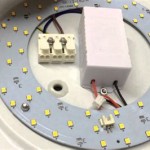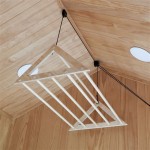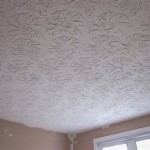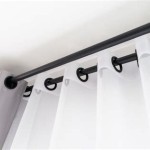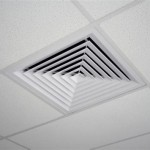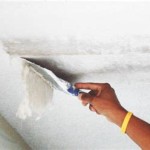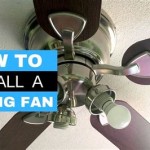What to Use to Cover Popcorn Ceilings
Popcorn ceilings, once a popular choice for their affordability and ability to hide imperfections, have fallen out of favor. Their textured surface can trap dust and allergens, making them difficult to clean. Their dated appearance can also detract from the overall aesthetic of a room. If you're looking to update your home, covering a popcorn ceiling is a great way to modernize and improve its look and feel.
There are several options available for covering popcorn ceilings, each with its own advantages and disadvantages. The best option for you will depend on your budget, the condition of your ceiling, and your desired aesthetic.
Option 1: Plastering or Drywall
Plastering or installing drywall is the most common and, for many, the most straightforward way to cover a popcorn ceiling. It involves completely covering the existing ceiling with a smooth, flat surface. This option offers the most durable and long-lasting solution, providing a clean slate for painting or wallpapering.
Advantages
- Provides a smooth, even surface for painting or wallpapering.
- Offers a durable and long-lasting finish.
- Allows for the installation of recessed lighting fixtures.
Disadvantages
- Can be a more labor-intensive and time-consuming process than other options.
- May involve removing the existing popcorn ceiling, which can generate dust and debris.
- Requires a higher level of skill and expertise.
Option 2: Ceiling Panels
Ceiling panels are a popular alternative to plastering or drywall. They come in various materials, including wood, metal, and plastic, and offer a quick and easy way to cover a popcorn ceiling. The panels are typically lightweight and easy to install, making them a good option for DIY projects.
Advantages
- Quick and easy installation process.
- Available in various materials, colors, and styles to match any decor.
- Can be easily removed and replaced if damaged.
Disadvantages
- May not provide as smooth a finish as plastering or drywall.
- May not be suitable for all ceiling conditions.
- Can be more expensive than other options.
Option 3: Ceiling Paint
If you're looking for a budget-friendly solution, painting the popcorn ceiling can transform its appearance. While it doesn't completely eliminate the texture, a fresh coat of paint can refresh the room and create a more modern look.
Advantages
- Most affordable option.
- Easy to do yourself.
- Can be used to create a variety of looks, from classic to modern.
Disadvantages
- Will not completely hide the popcorn texture.
- May require multiple coats of paint to achieve a desired finish.
- May not be suitable for ceilings with significant damage or imperfections.
Ultimately, the best way to cover a popcorn ceiling depends on your individual needs and preferences. Carefully consider the advantages and disadvantages of each option before making a decision. If you're unsure which route to take, consulting a professional contractor can help you choose the best solution for your home.

Cover Popcorn Ceilings Armstrong Residential

How To Cover A Popcorn Ceiling With Shiplap Sprucing Up Mamahood

Decorative Ideas To Cover Popcorn Ceilings Artsy Rule

How To Cover Popcorn Ceilings A Turtle S Life For Me

How To Cover Popcorn Ceiling 8 Creative Ways Making Maanita

The Best Way To Cover Popcorn Ceilings With Beadboard Shoe Makes New

How To Cover Up Those Popcorn Ceilings 2024 11 01 Walls

How To Plank A Popcorn Ceiling

Easily Cover Popcorn Ceilings With Shiplap

A Simple Beautiful Solution For Covering Up Popcorn Ceilings The Happy Housie
Related Posts

